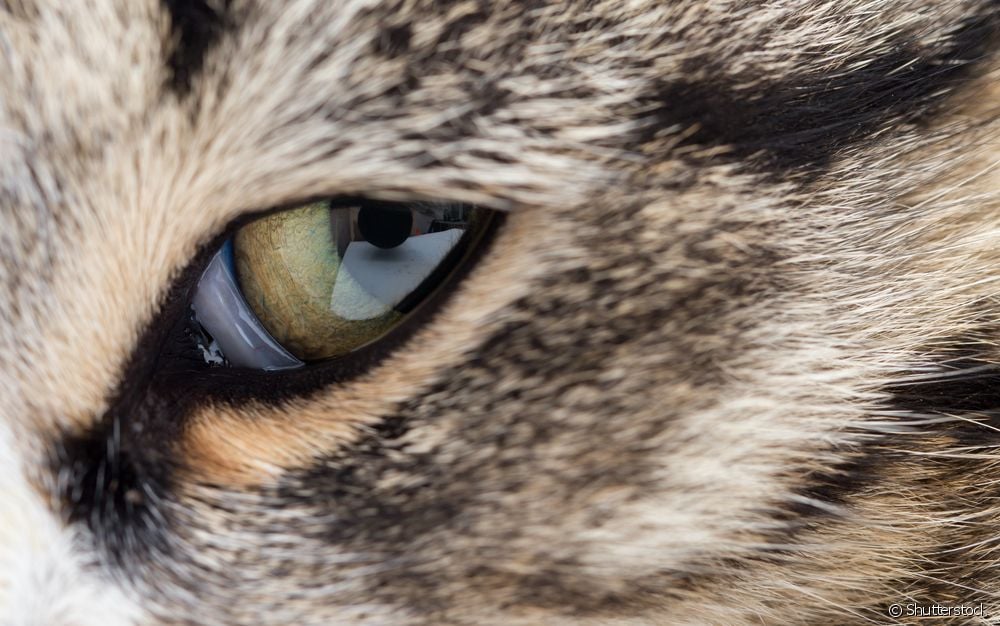If you've seen your cat's third eyelid exposed, watch out! It could be Haw Syndrome

Table of contents
Have you ever heard of haw syndrome in cats? The name may sound strange, but the truth is that it is a relatively common condition characterized by the exposure of the third eyelid in the cat's eye. Yes, felines have three eyelids, but only two are visible. When the last one appears, it is usually an indication that there is something wrong with the animal's eyesight and it is important to seek help.To understand more about haw syndrome, causes and main associated symptoms, check out the following!
See_also: Okra for dogs: can it or can't it?What is haw syndrome?
Haw syndrome is defined as the bilateral protrusion of the third eyelid membrane, also known as the palpebra tertia or nictating membrane. It is basically as if the organ is protruding outwards, which can cause some astonishment in guardians at first. This is because this additional eyelid is imperceptible and, anatomically, is "hidden" in the corner of the cat's eye. Amembrane, which has a white coloration, can only be seen at a glance when the cat is asleep or fully relaxed (and in these cases, it is not indicative of any problem).
The situation only requires attention when we have a cat with an exposed eyelid, which can affect only one side, or both eyes of the animal. As the membrane is responsible for protecting the eyeball and keeps impurities away from the region, when the animal suffers from haw syndrome, the cat's eyes are exposed to a series of problems.

Third eyelid: cat with this part of the eye exposed is the main symptom
It is not difficult to identify haw syndrome in cats, because the main characteristic of the disease is precisely the presence of the third eyelid exposed - that is, when this eyelid protrudes outward. The condition can affect only one eye or be bilateral. Therefore, the main symptom of haw syndrome in cats is the membrane appearing. It is important for the guardian to be aware of otherssigns of discomfort in the animal, such as impaired vision, squeezed eyes, the animal bumping into places or even the cat scratching itself in the eye area.
See_also: Learn how to teach your dog not to climb on the sofaWhat are the causes of haw syndrome in cats?
To date, the causes of haw syndrome are unknown, but it is suspected that infections, neuropathies and other diseases may be related to the problem. In addition, injuries, injuries and eye diseases can also result in a cat with an exposed third eyelid, so there is little care. When you notice that your feline has this region apparent, the most recommended is toMake an appointment with a veterinarian specializing in ophthalmology as soon as possible, where they can perform all the necessary tests to confirm the diagnosis and indicate the best form of treatment, if necessary.

